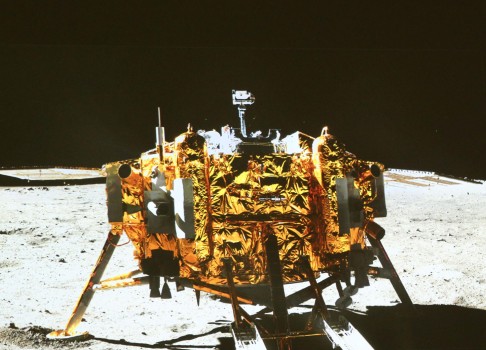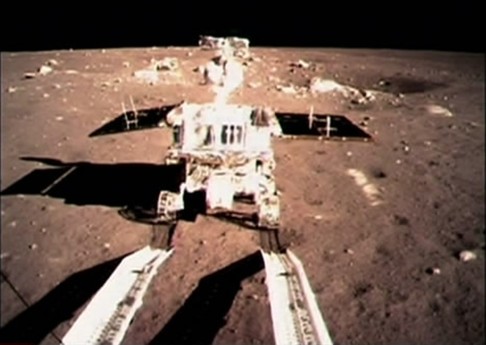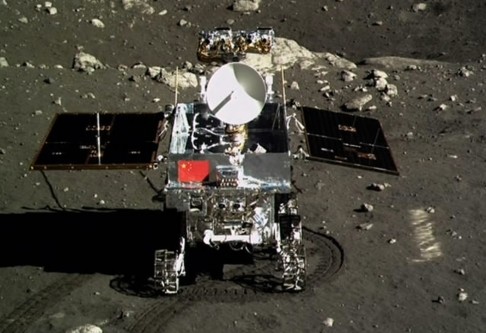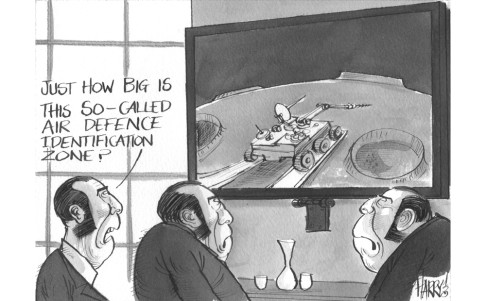China's lunar rover Yutu rolls smoothly onto moon's surface
Vehicle sends first photos back to earth as leaders watch in control centre

China's lunar rover Yutu, or Jade Rabbit, has rolled on to the surface of the moon and started beaming its first photographs back to earth last night.
The Yutu and the Chang'e-3 landing spacecraft took photos of each other, including a close-up of the national flag on the Yutu.
President Xi Jinping, Premier Li Keqiang and other state leaders were in the flight control centre in Beijing to watch events unfold and shake hands with scientists.
The rover took about 90 minutes to leave the landing craft and edge down two rails to the lunar surface. It stopped several times for checks to be carried out before touching rock in an area of the moon called the Bay of Rainbows, or Sinus Iridum in Latin.
The lunar lander carrying Yutu had touched down on moon at 9.12pm on Saturday, about six hours before the rover started its first mission.

Space scientists and engineers were holding their breath throughout Yutu's exit from the landing craft for fear the force of landing and fine lunar dust might have damaged some critical electronic or mechanical parts.
Zhang Tingxin, chief commander of the rover system, told state television that the separation was "smoother than expected".
"The landing vehicle was in a very good position. After touchdown, it was standing almost entirely vertically, with only one or two degrees of tilt," he said.
The craft had also found a landing area clear of rocks or large debris, making the rover's first steps on the moon easier.

The landing craft and rover will conduct a series of experiments over the next three months. These include carrying out astronomical observations, studying the earth's upper atmosphere and using ground-penetrating radar and spectrometers to investigate the moon's geological structure and mineral and chemical make-up.
Dr Morris Jones, an Australian space analyst, said he was impressed China had managed to put a craft on the surface of the moon at the first attempt.
"This was no easy task. The moon keeps its secrets well and needs to be probed with skill and persistence," he said.

The photos due to be beamed back from the moon were taken with a 3-D panoramic camera space scientists and engineers have spent years developing.
Pictures taken during the nation's previous lunar missions were in black and white.
The camera is just one of numerous technological breakthroughs accomplished for the mission. Some technology and instruments were not only new to China but had never been used by any country in a moon landing, the last of which was carried out by the Russians in 1976.
A variable thrust engine brought the speed of the landing craft from more than 6,000km/h to virtually zero in minutes and allowed it to hover and move horizontally about 100 metres above the moon before touchdown, This enabled the spacecraft to avoid rocks and holes and land in the safest area.
Liu Zhirang, a rocket expert with the mission, told Xinhua the landing craft system was the best China could produce and its performance demonstrated the nation's growing capability in rocket engineering.
Wu Fenglei, a mission flight control expert, said the success was not due to luck. "The smoothness of the mission is a result of technological preparation, not luck," he told CCTV.
